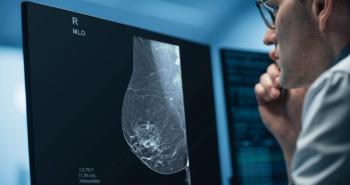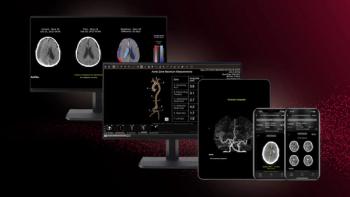
Report from SNM: Hybrid PET/MR imaging of brain debuts at annual meeting
Researchers from Germany and the U.S. released findings from the first study showing images of the human brain acquired simultaneously by the two modalities of a hybrid PET/MR scanner. They released the data at the 2007 Society of Nuclear Medicine meeting being held in Washington, DC.
Researchers from Germany and the U.S. released findings from the first study showing images of the human brain acquired simultaneously by the two modalities of a hybrid PET/MR scanner. They released the data at the 2007 Society of Nuclear Medicine meeting being held in Washington, DC.
"The feasibility of simultaneous PET/MR imaging in humans opens new potentials in the emerging field of molecular imaging. Our data prove that the PET/MR scanner allows even multifunctional imaging with PET, functional MRI, and spectroscopy," said coauthor Dr. Bernd J. Pichler, head of the Laboratory for Preclinical Imaging and Imaging Technology at the University of Tuebingen.
Pichler cited the promising potential of hybrid PET/MR scanning for clinical applications in brain oncology, neurology, and stroke as well as for research into stem cell therapy. PET/MR should help deepen the knowledge scientists and physicians bring to neurological disorders such as Alzheimer's disease, Parkinson's, epilepsy, depression, and schizophrenia, he said.
PET research is shedding light on early diagnosis of neurodegenerative conditions causing cognitive decline, but it cannot measure reduced brain volume caused by atrophy. By combining PET and MR, clinicians could make a more sound determination of both cognitive impairment and atrophy. New emerging neurological biomarkers can only help in this direction, Pichler said.
Pichler and colleagues at the Max Planck Institute for Brain Research and the University of Tennessee collaborated with engineers from Siemens Medical Solutions in Erlangen, Germany, in the study. Siemens developed the dedicated head PET/MR platform. Several laboratories, including that of Dr. Simon Cherry at the University of California, Davis, contributed engineering innovations to make the fusion of PET and MR technologies possible.
Fusion imaging was also addressed in May during a plenary session at the joint International Society for Magnetic Resonance in Medicine and European Society for Magnetic Resonance in Medicine and Biology meeting. In that session, the technology was referred to as MRI/PET.
For more information from the Diagnostic Imaging archives:
Newsletter
Stay at the forefront of radiology with the Diagnostic Imaging newsletter, delivering the latest news, clinical insights, and imaging advancements for today’s radiologists.




























